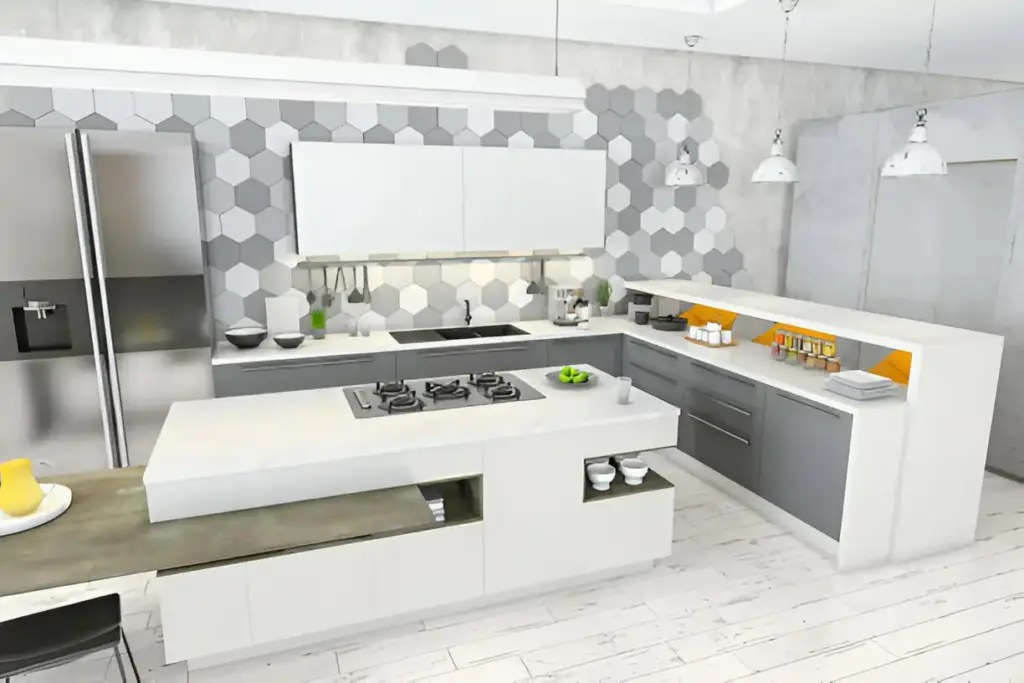Remodeling your kitchen may be a costly and challenging undertaking. With careful planning and budgeting, however, you may design a stunning and valuable kitchen without going over budget. A clear plan is essential before you begin your kitchen renovation. This guide will help you create your dream kitchen, even on a tight budget. Whether choosing cost-effective materials or planning for a dishwasher installation Maryland, effective strategies can save money and effort.
Creating your dream kitchen doesn’t have to be an expensive endeavor. With strategic planning and budget-friendly choices, you can make significant improvements without overspending.
Planning Your Kitchen Renovation
Thorough planning is crucial in a kitchen renovation. Determine the layout and functionalities needed, sketch a basic design, and prioritize changes that impact daily usage. Consider how your family uses the kitchen and what could improve its functionality. For example, consider more counter space or an additional prep sink if you cook together. An open layout with easy movement between the kitchen and living area may be more critical for frequent entertainers. Effective planning ensures your kitchen meets your household’s needs while staying within budget.
Setting a Realistic Budget
Begin by defining a clear budget. Allocate funds for each part of the renovation, including materials, appliances, and labor. It’s essential to keep a contingency fund for unexpected expenses. By creating a precise budget, you can keep track of your spending and prevent financial distress. To properly balance your budget, consider a combination of high-impact and low-cost adjustments.
Prioritizing Expenditures
Focus on areas that significantly affect functionality and aesthetic appeal in your kitchen, such as appliances, countertops, and cabinetry. Track sales and discounts to stretch your budget, and take advantage of seasonal sales, clearance items, and warehouse outlets for high-quality materials and appliances. Instead of replacing everything, think about painting or getting new hardware for your cabinets or floors. These modest adjustments might make a big difference without breaking the bank.
Choosing Cost-Effective Materials
Material choice significantly impacts your overall budget. Opt for cost-effective yet durable materials. For example, laminate countertops and vinyl flooring are affordable choices that offer great looks and longevity.
Comparing Materials
Compare reclaimed wood and refurbished hardware for cost, durability, and aesthetics. Reclaimed wood adds a unique, eco-friendly touch to countertops, shelving, or accent walls, while refurbished hardware adds character without cost. Research the pros and cons of each material to make a choice that fits your lifestyle and budget. This will help you choose the suitable materials for your kitchen.
Incorporating Modern Design
Modern kitchen design includes sleek cabinetry, open shelving, and minimalist hardware, enhancing appearance and functionality. These options are often more cost-effective than traditional designs. Lighting is also crucial, with task lighting, under-cabinet lights, and ambient lighting enhancing the kitchen’s appearance and usability. Energy-efficient LED lights, pendant lights, and under-cabinet strip lights create the illusion of a larger space, highlighting important areas and making the kitchen more practical and inviting.
Adding Functional Features
Functionality is critical in a kitchen. To enhance usability, add pull-out drawers, lazy Susans, and ample storage. These features make daily kitchen tasks easier and more enjoyable, adding value to your renovation investment. Consider ergonomics when planning your updates to ensure that the kitchen is comfortable for everyone in your household.
Maximize Storage
Utilize innovative storage solutions like vertical storage, corner cabinets, and multi-tiered drawers to increase kitchen space without compromising functionality. These functional features make the space more user-friendly and add a unique touch. Organize your kitchen by placing items in specific places, reducing clutter, and making it easier to find what you need. Add pull-out shelves, built-in spice racks, or a small pantry to increase storage capacity without significant renovations.
DIY vs. Hiring Professionals
Determine which jobs you can complete independently and which require a professional’s assistance. While doing projects yourself can save costs, it’s best to leave some tasks to experts, such as electrical and plumbing work, to prevent costly errors and guarantee safety. Realistically evaluate your abilities, and don’t be afraid to ask for assistance when needed.
When to Hire a Pro
A professional should handle complex tasks, such as electrical work, gas line modifications, and structural changes. In contrast, painting, cabinet installation, and tiling can often be done yourself, saving money and time.
Professionals bring experience and can often complete tasks faster and more efficiently. While DIY is a great way to cut costs, it’s vital to understand your limits. Poorly executed work can lead to higher costs in repairs or adjustments down the road. Balance your efforts by taking on simple projects while hiring professionals for more complicated tasks.
